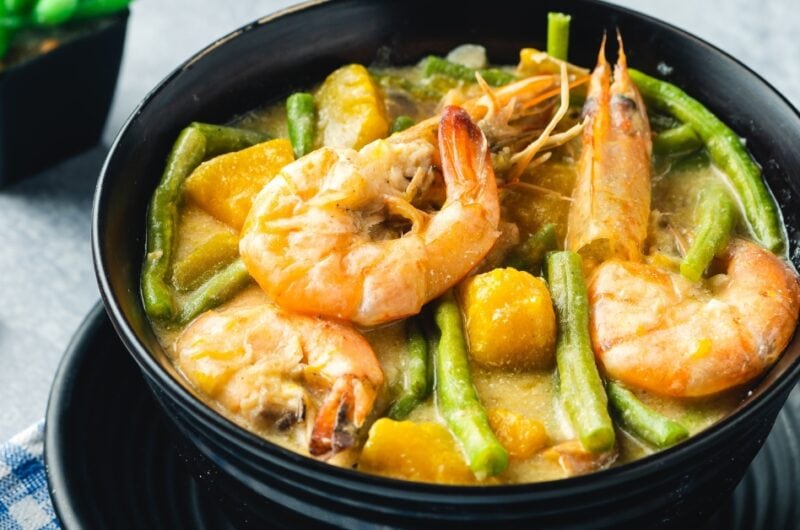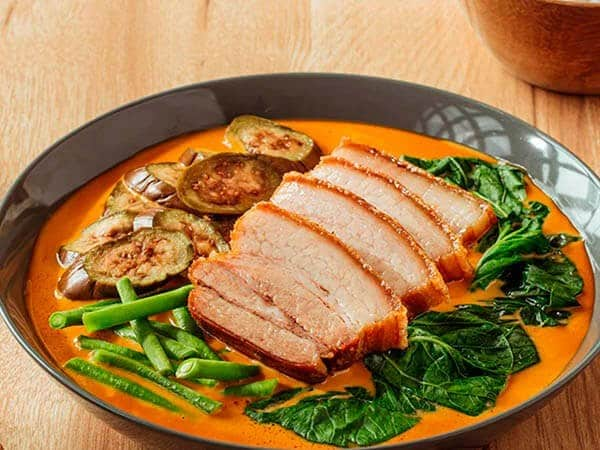Enjoy the Art of Traditional Filipino Food Recipes.
Authentic Filipino Food Recipes to Attempt in your home
Discovering genuine Filipino food dishes presents a possibility to appreciate the detailed flavors and social significance behind each meal. Utilizing fresh, neighborhood ingredients is necessary, as is welcoming common eating-- a characteristic of Filipino culture.
Popular Filipino Dishes
Filipino food boasts a rich tapestry of tastes and traditions, with over a loads legendary recipes that highlight the country's varied social impacts. One of one of the most widely known meals is Adobo, a savory stew typically made with chicken or pork, seasoned in vinegar, soy sauce, garlic, and seasonings. Its tasty taste account makes it a staple in Filipino homes.
An additional precious meal is Sinigang, a sour soup typically made with tamarind, tomatoes, and numerous veggies. This dish can include pork, shrimp, or fish, and its refreshing preference is ideal for warm environments. For those with a pleasant tooth, Leche Flan-- a velvety sugar custard-- functions as a popular treat, showcasing the Filipino penchant for abundant, wonderful flavors.
Kare-Kare, a passionate oxtail stew with a thick peanut sauce, in addition to the legendary lumpia, or spring rolls, even more exemplify the variety discovered in Filipino food. Each dish not only provides special preferences yet also narrates of local components and historical impacts, making Filipino food a vibrant representation of its society and heritage.
Necessary Ingredients for Filipino Food Preparation
The significance of Filipino cooking hinges on its necessary components, which act as the foundation for the country's precious recipes. A variety of flavors and structures come together, showcasing the diverse cultural impacts that shape Filipino food.
Key components consist of rice, the staple that accompanies nearly every dish, symbolizing nourishment and community. Soy sauce, vinegar, and fish sauce (patis) are vital for spices, conveying umami and deepness to dishes. Fresh herbs like cilantro and basil include fragrant freshness, while garlic, onion, and ginger supply a robust taste base.
Healthy protein resources such as pork, chicken, and seafood are central to lots of recipes, frequently marinaded to boost taste. Veggies like eggplant, bitter melon, and eco-friendly beans contribute necessary nutrients and equilibrium - Filipino food recipes. Coconut milk is one more significant component, lending creaminess and a subtle sweet taste to various stews and desserts
Finally, calamansi, a citrus fruit, provides a rejuvenating tang that elevates dishes and beverages alike. Together, these active ingredients produce the lively and abundant tapestry of tastes that specify Filipino cuisine, making it both calming and distinct. Understanding these fundamentals is essential for any person wanting to duplicate genuine Filipino dishes in the house.
Step-by-Step Recipe Overview

Begin by preparing your active ingredients. For Adobo, slice the meat into consistent items and marinate it in soy sauce, vinegar, garlic, and bay leaves for a minimum of thirty minutes. Next off, warmth oil in a pan and sauté the garlic and content onions till fragrant, then add the seasoned meat, enabling it to brownish uniformly.
For Sinigang, start by boiling water in a pot and including your choice of meat. As soon as tender, include tamarind paste or fresh tamarind for that signature sour flavor. Follow with veggies like radish and kangkong, cooking up until just tender.
:max_bytes(150000):strip_icc()/Ginataang-Gulay-Filipino-Vegetable-Stew-FT-RECIPE1023-4e7dd044042f49549a2c3421a03faf60.jpg)
Tips for Authentic Taste
Commonly, achieving genuine taste in Filipino meals pivots on the mindful choice and treatment of ingredients. Beginning with fresh, high-grade produce, as the vibrancy of veggies and herbs significantly enhances the recipe's total preference. Staples like garlic, onions, and ginger develop the aromatic foundation for many dishes; utilizing them in correct percentages is critical.
Selecting the appropriate healthy protein is similarly vital. For circumstances, standard adobo often employs chicken or pork, seasoned to take in the marinade's complete taste. Additionally, think about sourcing locally generated or local components, as they can offer credibility that store-bought choices lack.
Food preparation methods additionally play an essential function. Slow-cooking methods, such as braising or stewing, allow tastes to combine magnificently, while frying can include a gratifying structure. Don't ignore seasoning; using salt, fish sauce, or soy sauce at the appropriate moments can raise a recipe considerably.
Serving and Appreciating Filipino Food
Culinary experiences are improved when Filipino food is offered with interest to custom and neighborhood. The method of sharing dishes is main to Filipino society, signifying unity and hospitality. When offering Filipino meals, consider using traditional serveware, such as clay pots or bamboo baskets, which improve the authenticity of the experience.
Commonly, Filipino meals are enjoyed family-style, with a variety read the full info here of dishes placed at the center of the table. This common method motivates communication and allows guests to sample different flavors. A well-curated spread may include staples like adobo, sinigang, and lumpia, matched by rice, which is a fundamental component of every meal.
Going along with the food with standard condiments, such as soy sauce, vinegar, or chili paste, can raise the eating experience, welcoming diners to tailor their plates to their choices. Additionally, integrating neighborhood beverages, like calamansi juice or tuba, can boost the overall taste profile.
Conclusion
